| Back |
Gliders and radio control models
Up to now I have always preferred gliders to powered models, even though I started with control line and tuned an AM25 diesel until it almost flew to pieces.
To fly a glider you need so many skills. For free flight you need to be able to interpret the wind and clouds for lift. You must design and trim the model for the mimimum glide angle and then tow and launch at exactly the right moment. I liked the mathematics of flight. If you have a slope nearby, like Ivinghoe Beacon where I flew for a while, the skills are different. You must use radio control and keep the model in the updraughts produced by the wind, going neither too low to risk landing out down on the slope nor too high to lose the model back from the slope into a down-draught.
I have done thermal soaring, both free flight and radio controlled, and RC slope soaring. There are no decent slopes in Norfolk of course but I am hoping to fly from the cliffs as soon as I have the model and the skills and the wind is between north and east.
When I started flying people didn't take many photographs. I don't have any pictures of the first five models so must rely on stock pictures.
Keil Kraft Caprice
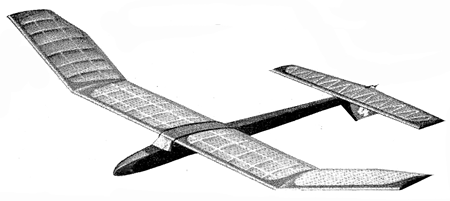
This was my first glider. I tried to get Kenton Model Aircraft Club interested in free flight. Most members flew control line combat and speed. I organised an annual competition but it fizzled out, partly due to the fact that I always won.
Leena A/2 F1a
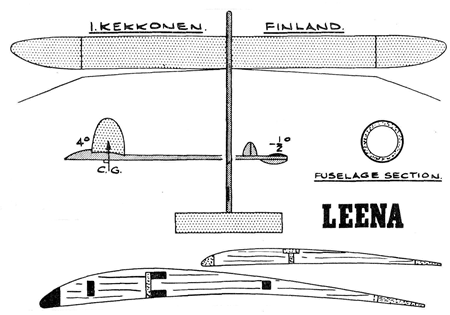
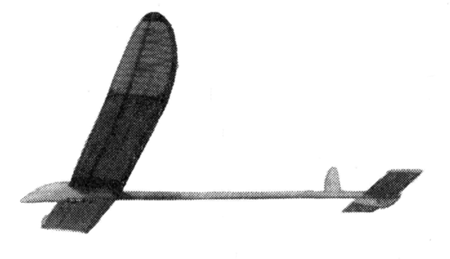
I flew this at the Nationals with some success. The embedded spruce spars were a pain to do but they produced perfectly smooth wing surfaces and the ribs were stronger. Wings and tailplane were covered with yellow japanese tissue. The fuselage and fin were painted blue. I used a laminated ply tongue for the wing mount that projected from the fuselage. The wings had a box that slid on, fitted between the two main spars. The tongue was radiused front and back to allow the wings to swing off either way.
Sans Egal A/2 F1a
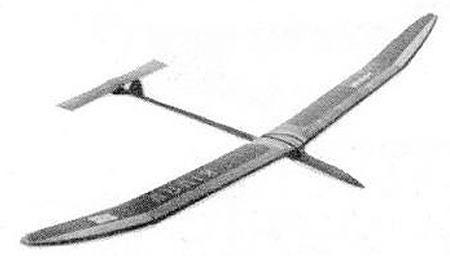
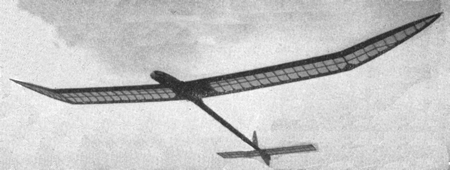
This flew beautifully and was a good test of my building skills. Flying surfaces were covered in yellow Japanese tissue and it had a painted blue fuselage.
Here is one flown by Dave Hambley to win in the Classic Glider category at the Free Flight Nationals in 2018
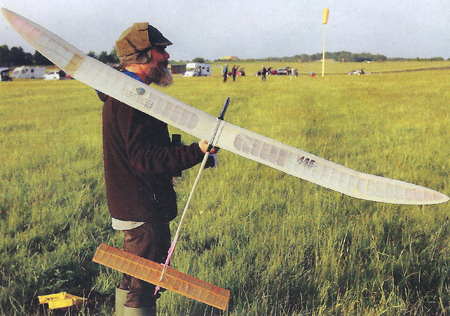
Photo by Mike Woodhouse
Graupner Amigo
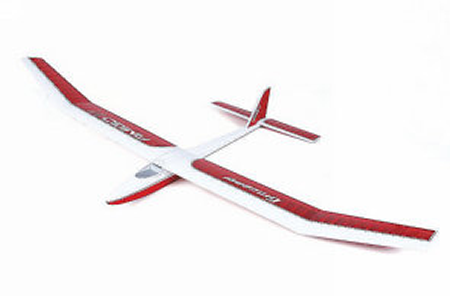
Mine had yellow tissue covered wings and blue fuselage. It was excellent at Ivinghoe when there was only a very light wind, even though it had only elevator and rudder.
Graupner Cirrus
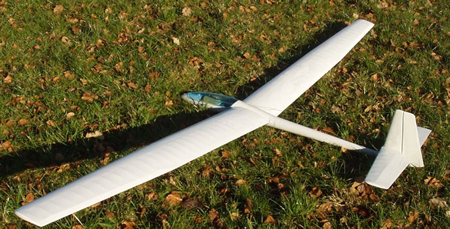
Mine was all-white but had tissue covered wings. It was a superb thermal soarer on rudder and all-flying tailplane. It was tricky to land as it floated for ever. I still had the wings and tailplanes and built a new electric version with ailerons and airbrakes in the existing wings and a new carbon tube cored fuselage. I reduced the dihedral to about 3 degrees. Covering is yellow film from Hobby King, which I find excellent. The curvy planked fuselage has 24 gsm glass fibre applied using Eze-Kote and is brush-painted with Vallejo Premium acrylic. To see the build details click here.
Here it is:
Sirius on launch dolly
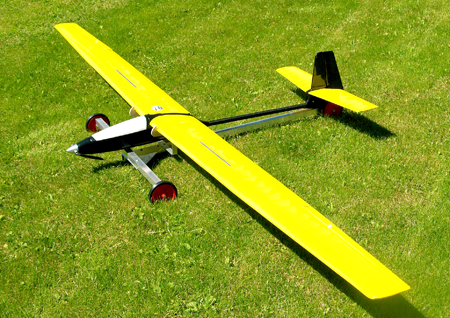
And here is a blast from the past. A fellow flyer in Norwich gave me his old Cirrus. As usual the fuselage became fragile so he remade the front with a very nice glass fibre repair. It is the classic original shape with just rudder and elevator and lots of dihedral. It balanced just right with two old Futaba servos, a FrSky X8R and a 4.8V NiMH pack up front. It will be weird to fly on two-channel again. I'll be towing it with the club's bungee on calm days.
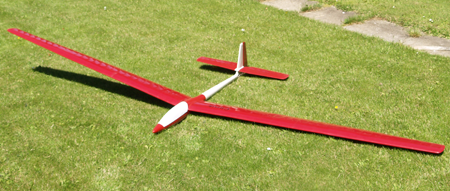
Trio
All I have of this is a plan and two wings. It was a slope soarer that could be flown with dihedral using rudder and elevator, or with a flat sheeted wing with ailerons. I flew it at Ivinghoe even with strong winds. The plan was RM151 but is no longer available from RCME.
Phoenix
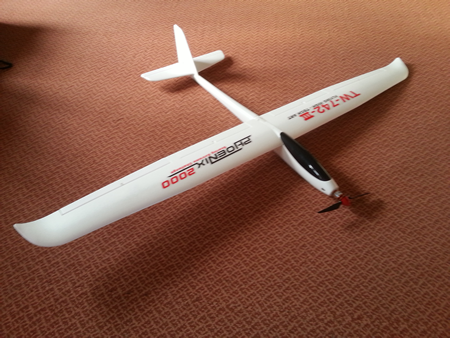
This was my first recent attempt to fly on local fields without help. Dustbin job. I chose a foamie as I suspected it might not last long and it didn't.
Bixler 2
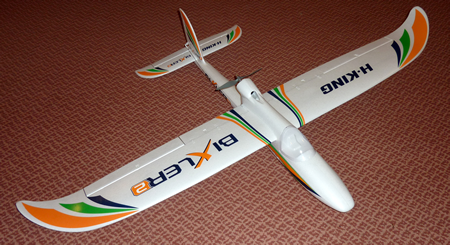
Another electric foamie. It was recommended to me as an excellent trainer. Its only shortcoming is that being a glider you don't get any training in wheeled landings.
Wot trainer
I have converted this from an IC kit. It uses an e-Flite 46 motor.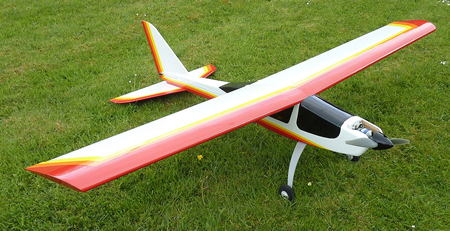
After a small argument with the ground I rebuilt the fuselage front. The new cowl is made of balsa covered with glass fibre and film. The bottom is open for motor cooling.

ST Model Discovery
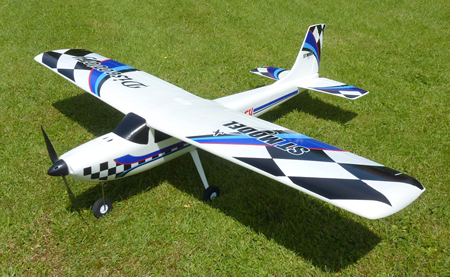
This got a good review in RCME so I though I'd try one. It went together very easily using screws rather than glue. Loads of room for the radio gear. The decals were pretty easy to handle. Even when I blundered and allowed two sticky sides to touch, I was able to separate them. The wings and rear have proved very robust but the front has taken a battering. The foam here is relatively thin and soft and a bad landing that knocks the front wheel causes damage. The supplied rudder/nosewheel servo is small and plastic-geared. A poor landing that jerks the nosewheel is also likely to damage the servo. It is a good idea to replace it with a tougher metal-geared servo.
After a crash that destroyed the nose I turned it into a tail-dragger (below). It gave me some practice with Eze-Kote, glass cloth and airbrushing, all of which were new to me. There are documents describing this on the Inventions, data and innovations page. I shortened the nose a bit so I could use 2.2Ah batteries instead of the specified 1.3 without needing balance weights.

Bix 3
This version of the Bixler has undercamber so should float well. It soon trimmed with centre of gravity a bit forward of the one specified. It is fast and responsive under full throttle, and slow and floaty when gliding. The wings are easily removable and are held down by turnbolts. This gives a lot more space for the radio equipment. So far I am very impressed.
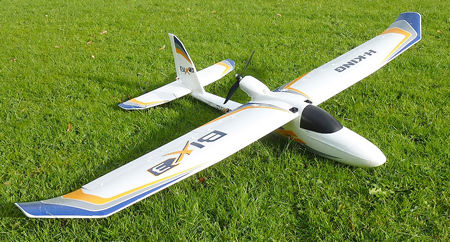
Tundra
It is an interesting and attractive Durafly model kit that I am getting very fond of. It has very large flaps, big wheels and springy undercarriage for STOL. It went together easily, though two undercarriage (U/C) holes needed to be drilled out and one U/C leg thread was not fully cut. The carbon fibre propellor is high quality and perfectly balanced but I don't like the way it is fitted. It is a simple nut and there is no way of locking the backplate, which is mostly inside the cowl anyway. I now use a pair of pliers with rubber inserts that grip round the motor body. There is just enough room to get it in through the underside of the cowl.
For a fuller review click here and for assembly hints click here. Having been flying it well over a year I can thoroughly recommend it as a second trainer. As your skills develop, it is able to do plenty of manoevres. The large wheels enable takeoffs even if the grass is quite long and it will take off at just over half throttle. The undercarriage trains you to land smoothly or you will bounce. A 2200 mAh 3S battery gives up to eight minutes of flight depending on throttle.
The Durafly ARTF model is based on the Canadian Dream Aircraft's Tundra. This is sold as a kit for about US$50 000. It is made of rivetted aluminium rather than plastic foam of course. The green paint is a bit septic on the wiki photo as you can see below. The model colour green is much better. For repainting I use Italeri Olivgrun 1943 4798AP acrylic, which is fairly close to the kit colour. https://en.wikipedia.org/wiki/Dream_Tundra
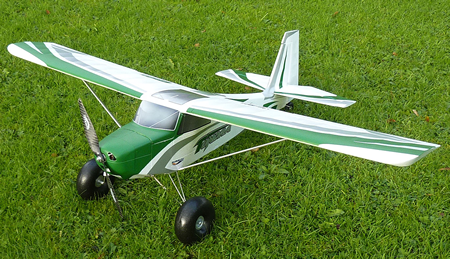
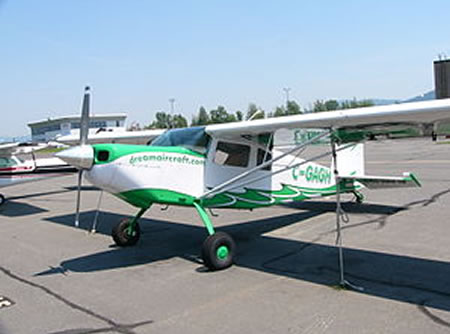
Here is a picture of my pilot. Poor bloke!
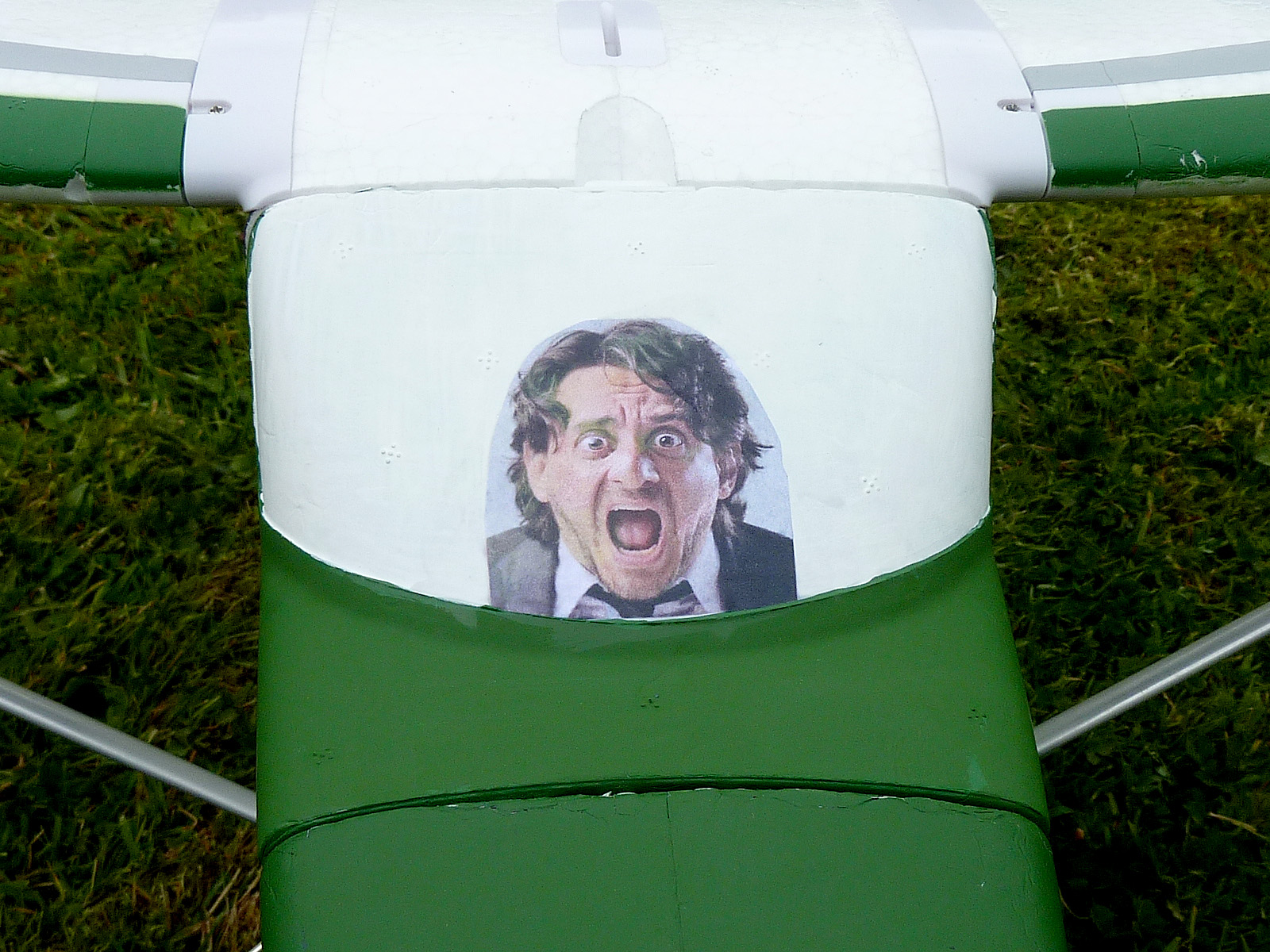
Rudolph
After a bit of a bump I rebuilt the front of my Bixler 2 using balsa. I gave it a red nose so Rudolph was the obvious name. I removed most of the really cheap and nasty decals using strips of sellotape and then air-brushed the colour.
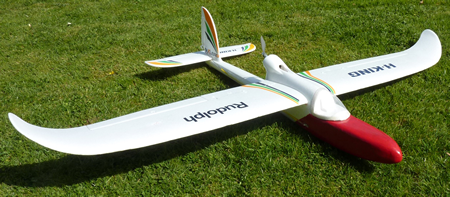
Repps Rider
This 2m model is an own design. It is for soaring off the cliffs and for tow launches using a bungee. Hence the wing roots are strong and there is a modest electric motor and battery to get me back from the sea or away from the full-size runway if blown downwind. It has a full-house radio setup. I will be building two additional 1m parallel wings to extend the span to 4m. My build notes can be read here.
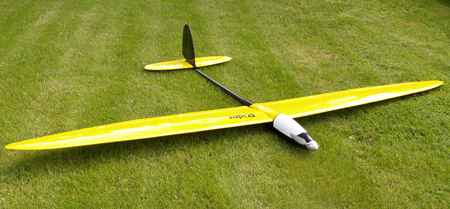
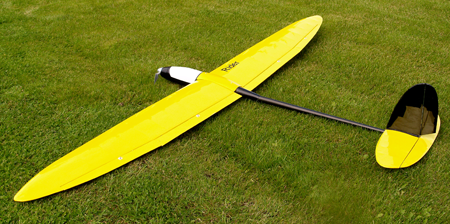
Acrowot foamie
I now always have a new Acrowot in its box in case I crash my current one. It's a great model. It's quite difficult to squeeze the connector and lipo telemetry leads in without them touching the motor. I have made a ply plate to hold them up without restricting cooling air flow and have made a shallow battery hatch cover out of ply (picture below). You can now buy a 3D printed plastic one.
This is a model that grew on me very quickly. I set the centre of gravity and high and low rate throws exactly as specified and it flies like a dream. It has a wide range of speeds and is very lively. Under full throttle it goes like the clappers. It will do most aerobatics with less than full throttle and all of them under full power. I love it!
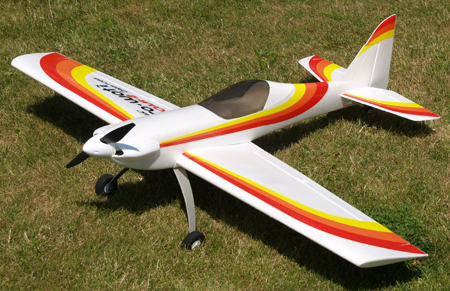
The thinner battery hatch cover
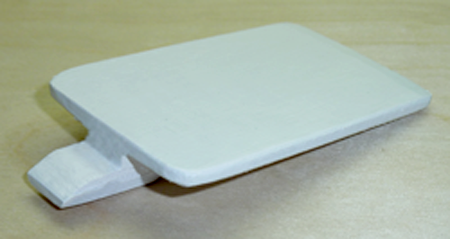
Goldwing Slick 540 1.7m
This is my first attempt at a fully aerobatic model. I am using a 4Max motor and two 4S 4.5Ah batteries in series. The pilot is apprehensive. My build notes can be read here.
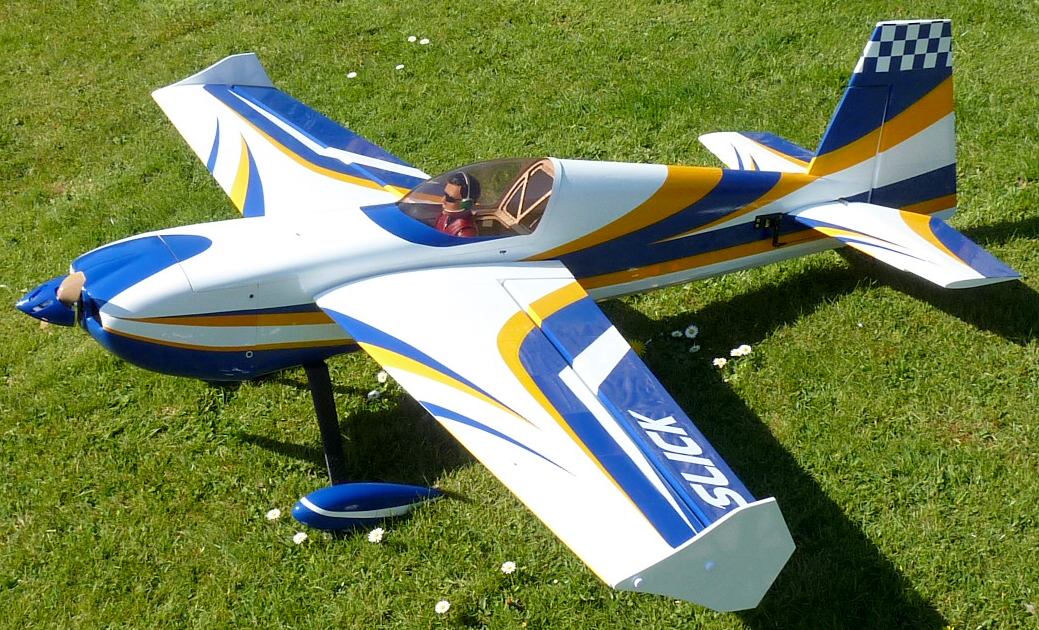
Chris Foss Wot4
I like the Wot range of models. I have just replaced my careworn Acrowot foam-e with a new one. It has given me hundreds of flights. It will be strange to fly with the thrust lines correct. So I thought I'd try a Wot4. My build notes can be read here.
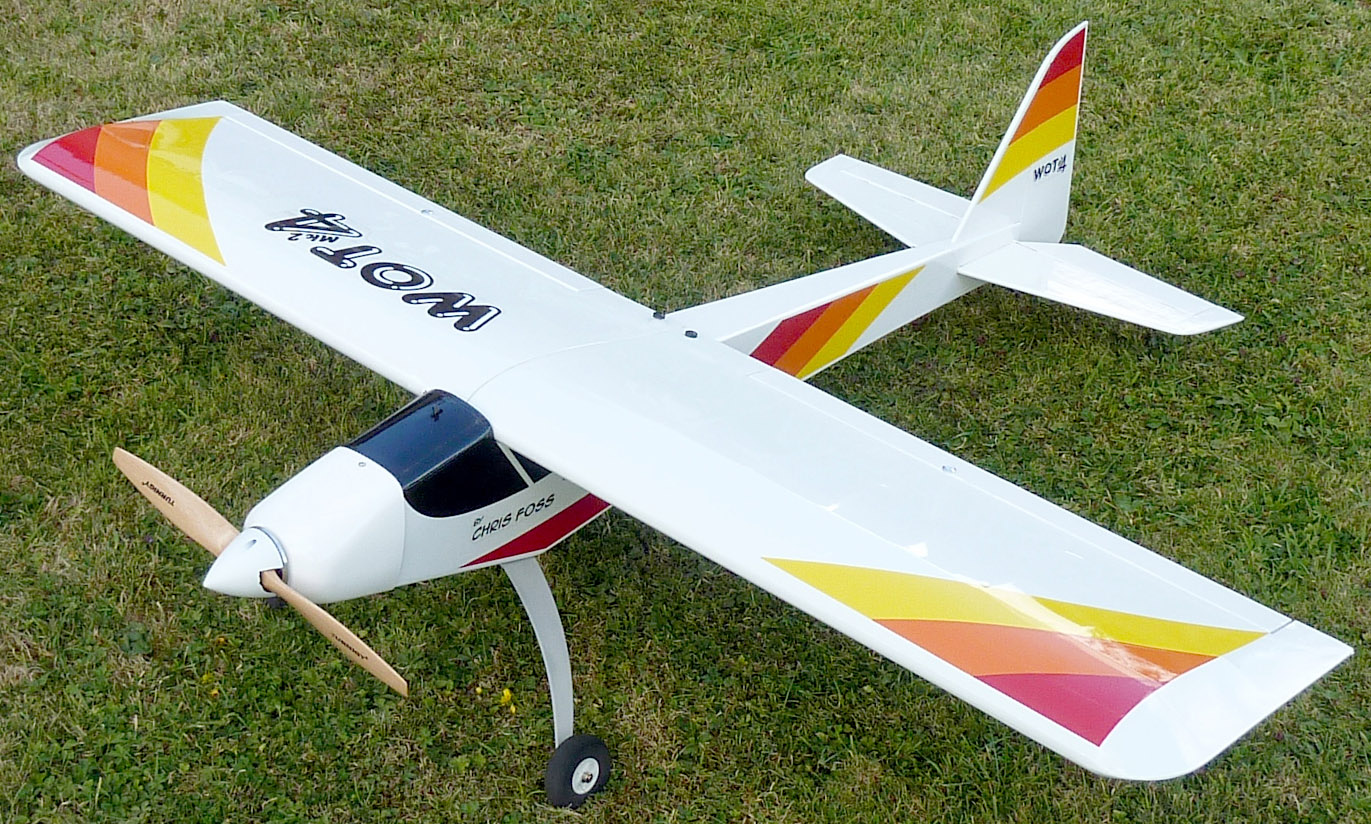
Bixler 1.1
I have flown all of the various versions of the foam Bixler and used it for training newcomers. This latest version is the best yet. It climbs rapidly and floats as well as the larger Bixlers with about a 1 m/s sink in still air, especially with the centre of gravity pushed back a bit. The external snakes have been removed giving a much sleeker design. It responds well to lift and is just fun to fly. It is very difficult to get the wing retaining screws in the first time. I used a scriber as a podger to get the holes lined up. My build notes can be read here.
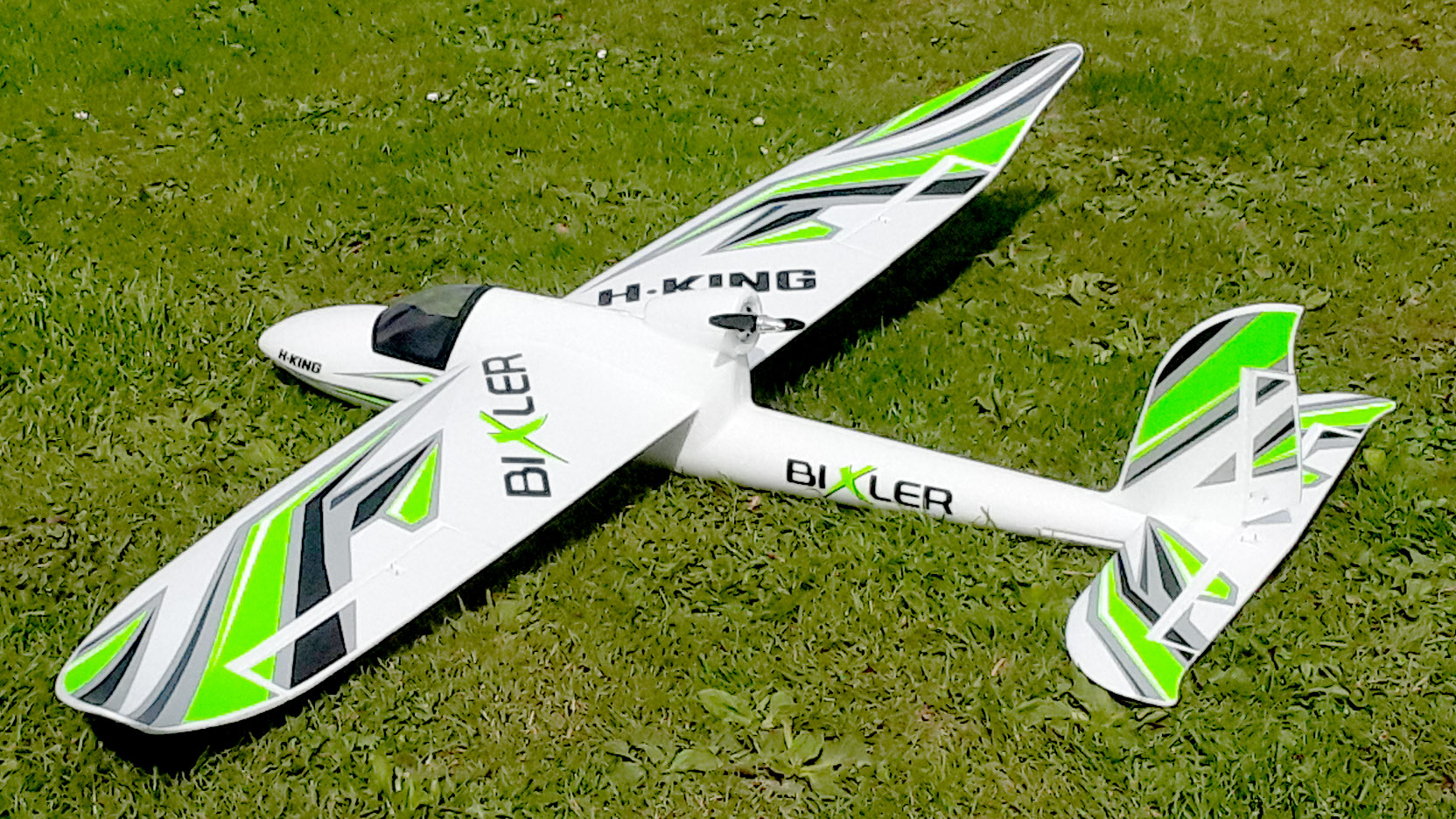
Volantex Phoenix 2.4 m
Everyone in my club who has a Phoenix loves it, including the 1.6, 2 and 2.4 m versions. So I decided to buy a 2.4. From the maiden flight I was hooked. I found it difficult to balance the model with the specified 2.2 Ah, 3S battery so opted to stack one on top of another in parallel and to move them back. The extra weight gave me poor soaring so I tried a single graphene battery that was heavier. Even fully forward the centre of gravity was aft of the correct point but it flew beautifully, once again confirming that soarers like a rearward CofG position. I am now using Turnigy 3Ah 3S batteries that are 17 g heavier so I can play with the CofG more. I left off the garish decals to give a more scale appearance, and painted the red spinner white. It has a lovely whistle when flying fast and level after a dive.
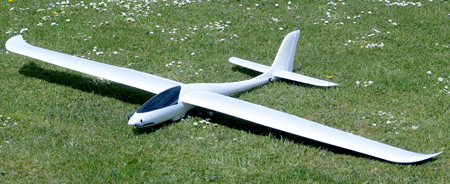
Volantex 2.5 m ASW28
This is a beautiful model but needed quite a bit of fiddling before it was ready to fly. My build notes can be read here.
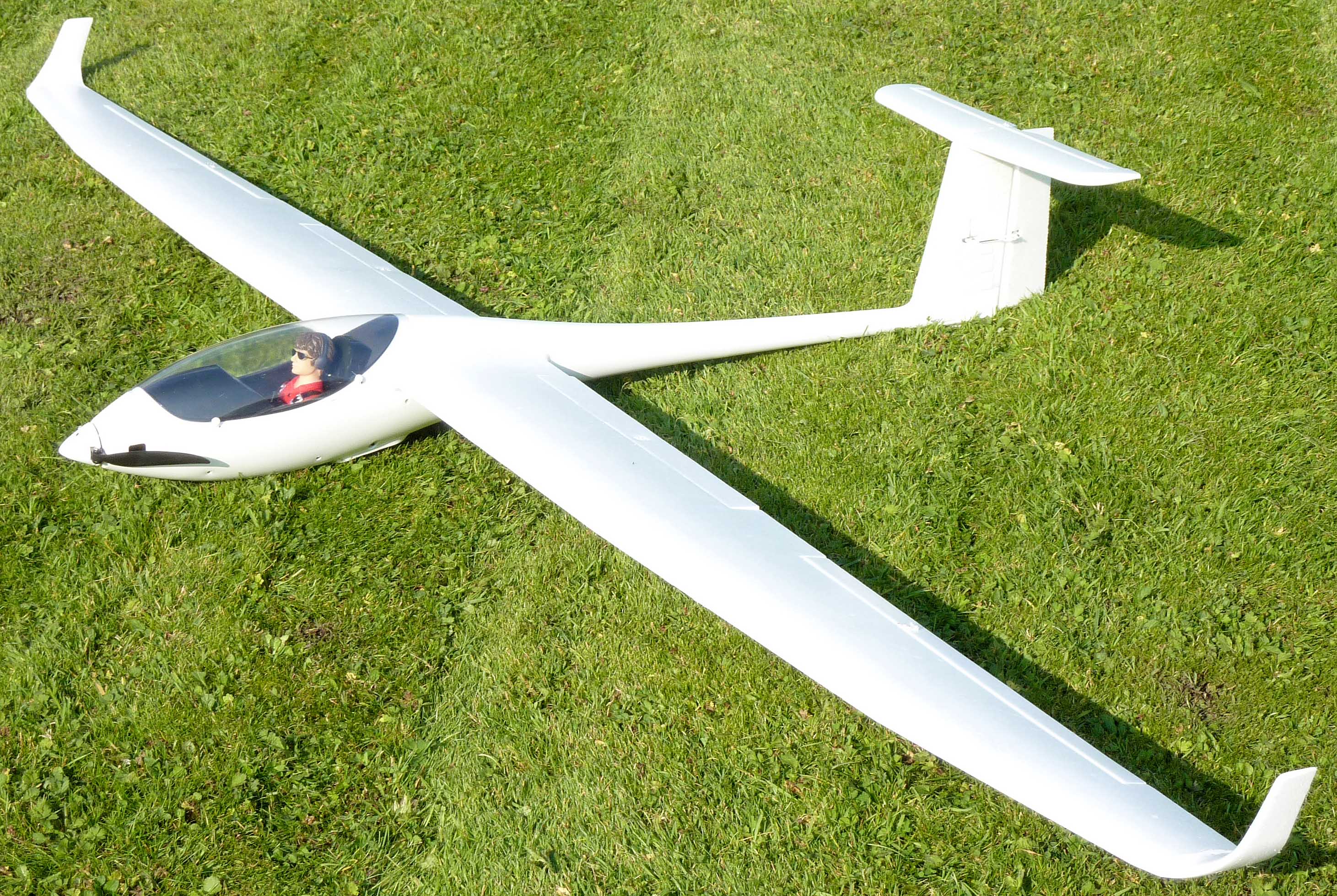
Seagull Models Extra 300S
This 1.6 m model was intended to be IC powered but I converted it to electric using a 4-Max 5065 and 6S power. My build notes can be read here.
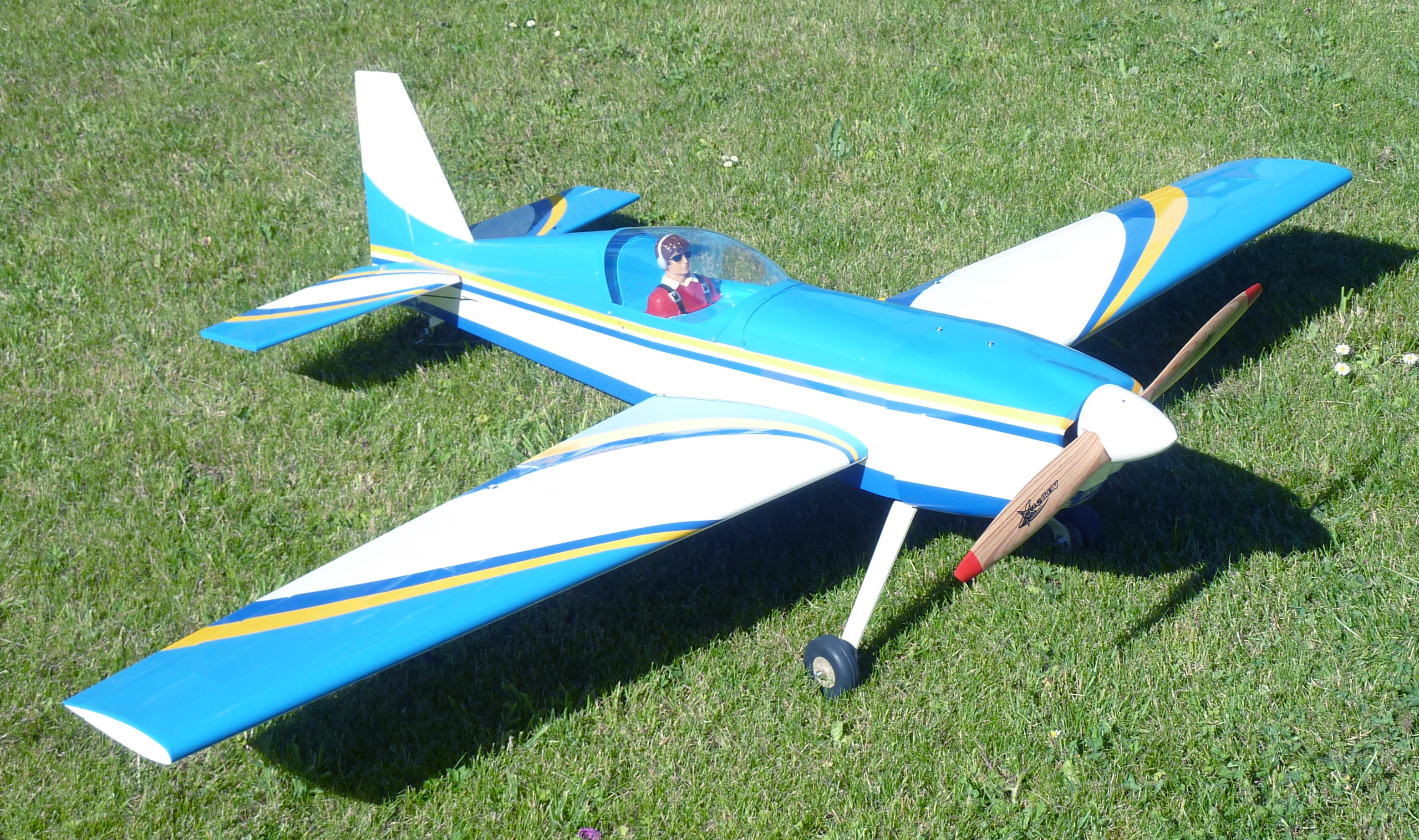
SLEC Coyote
This is a low cost 1320 mm span balsa and ply kit from SLEC. The sleek design can be built either as a pure glider or with electric power. Power conversion is a bit tricky as you will see from my build notes.
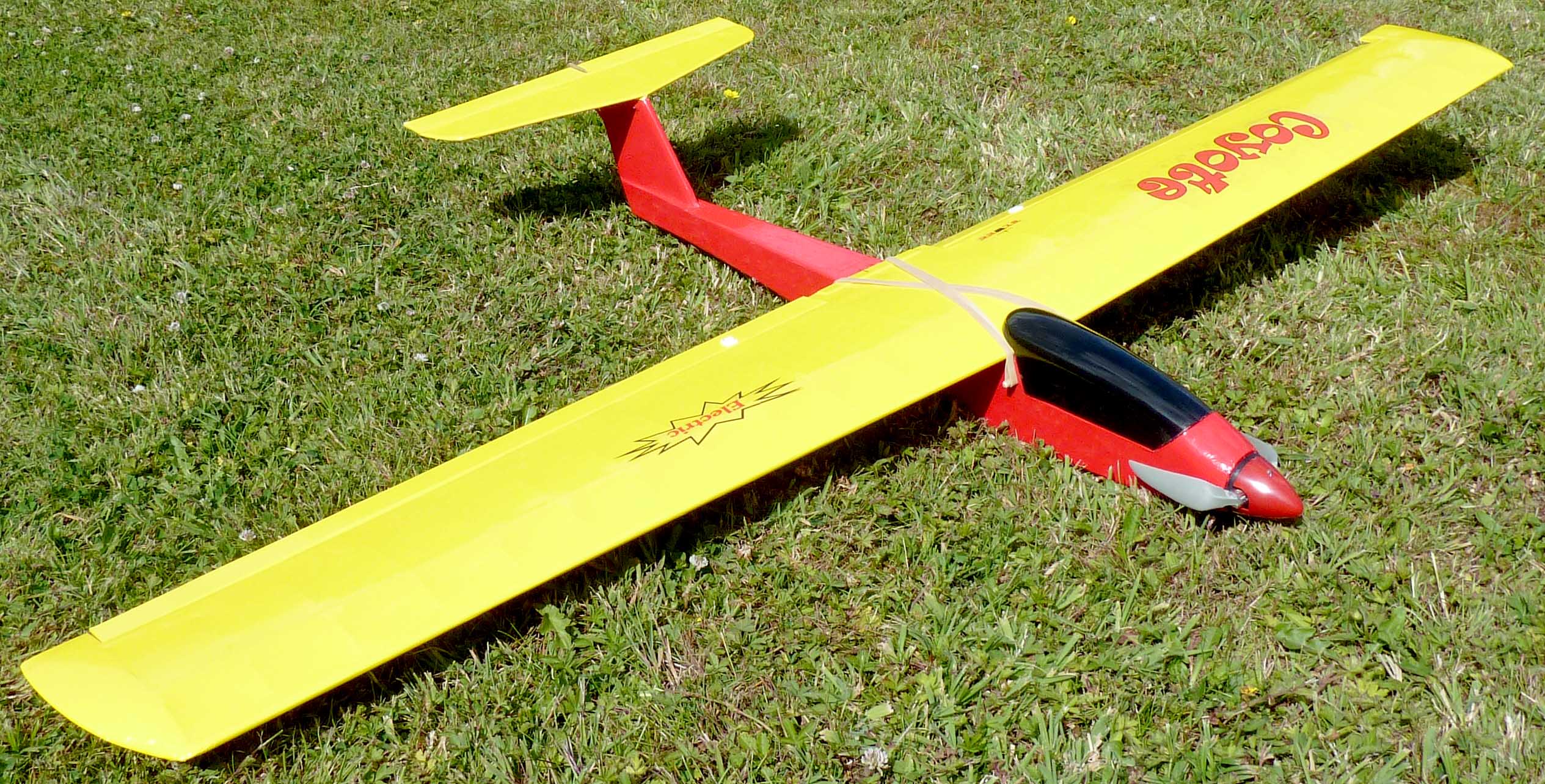
| Back |
(C) Peter Scott 2015
Last edit 10 October 2022